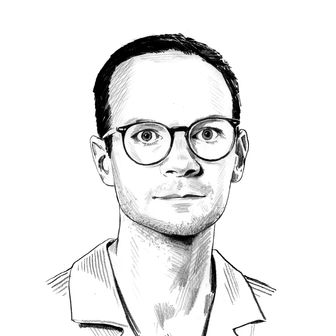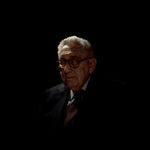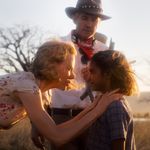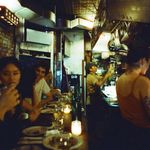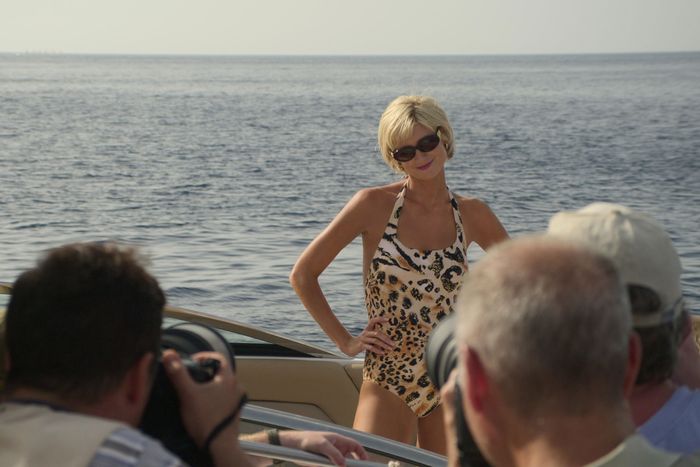
It’s often repeated that Princess Diana was the most photographed woman in the world, the kind of claim that sends you into a spiral of inconclusive Google searches full of tabloid articles that all seem to cite each other — who could possibly calculate that sort of thing? By what metrics? But as an appellation, the kind of phrase you might see trailing after the name of a goddess in a Homeric epic, it contains a sort of ecstatic truth. Diana must have been the most photographed woman in the world, especially after her divorce from Prince Charles and in the final year of her life, when she was trailed by increasing numbers of paparazzi. The public saw and consumed her through these images: Diana sadly on a yacht with Dodi Fayed, Diana walking through a field with land mines, Diana in the backseat of a car in Paris.
As much as The Crown is a decade-by-decade saga of Queen Elizabeth II’s reign, Peter Morgan’s Netflix series has always doubled as a history of the construction of image throughout those years. The royal family, once so in control of their pageantry, face the changing media apparatus of the 20th century. In season one, Elizabeth makes her first television address. After Claire Foy handed off the crown to Olivia Colman in season three, it opened with a scene of her looking at the changing portraits of herself for a stamp. It feels within reason to imagine that Morgan had the idea of Diana, world’s most photographed woman, on the mind as he worked on the first four episodes of the sixth season of the series, which focus on events leading up to and just after Diana’s death. What we know of the last weeks of her life is almost all on camera, and what happened to her is because of those chasing cameras, too.
There, however, Morgan’s interest in image runs up against the series’s innate deference to the people within Elizabeth’s circle. The Crown is premised on the possibility of getting to listen in on imagined conversations between royals behind closed doors, but its imagination in that area is generally sympathetic. It has depicted great tragedies and royal missteps — like the Aberfan disaster and Elizabeth’s delayed response — but tends to come down on the mildly humanist conclusion that there are real people trapped inside those symbols, stamps, and photographs. The Crown’s portrait of Diana’s ascendance in the fourth season gave the show real conflict because it had a conflict within the rarefied world on which it holds a microscope. That season in particular made some British royalists, and also Judi Dench, very angry, leading to demands for the show, which is obviously fiction, to be labeled as such on Netflix’s site. The fifth came with that disclaimer on its trailer and trod more carefully, approaching Diana and Charles’s breakup in a manner that made even the tampongate scandal seem tame. (It still managed to make John Major mad, which is maybe a point in its favor.) So, as the sixth season takes on one of the most lurid tabloid tragedies ever, it may not surprise you that The Crown is careful to fault. Any number of hacks, fame hunters, conspiracy theorists, and serious journalists have already speculated wildly about the events depicted here. The Crown takes a conservative approach. It sticks to what we know: the images.
Morgan gets the crash itself out of the way upfront. The premiere opens with an observer in Paris walking his dog; he sees cars screech by and hears the sound of a collision at a distance. It’s a way of ripping off the Band-Aid and also establishing the thematic approach for the episodes that follow: The Crown will tell you what happened here, but at a respectful distance. Its second episode frames Diana and Charles’s divorce through — surprise, surprise — the story of two photographers. We meet Mario Brenna (Enzo Cilenti), the paparazzo who made millions off those yacht photos, and Duncan Muir (Forbes Masson), a royalist Scottish portraitist hired to take a photo of Charles, William, and Harry together at Balmoral. Brenna is hip and intrusive, while Muir is deferential to a fault. Morgan frames the photographs as part of rival PR campaigns. As Diana’s recognition has grown, Charles’s advisors push him to emphasize that he’s calm and traditional, in contrast to her antics. She, meanwhile, knows how to use her image to draw attention to her charities, but the magnitude has spiraled out of control. She’s also caught up in Dodi’s father Mohamed’s (Salim Daw) plans to push her and his son (Khalid Abdalla) together.
This episode, written by Morgan, pivots around the idea that these events are taking place at a moment when personal information has become exponentially more accessible, and viral. There’s a scene where the members of the royal family peer at a computer as it boots up their new family website. Diana walks across a minefield as photos of herself and Dodi together hit newsstands. Subtle, this series has never been. But still, the specificity of that angle gives it a particular spin. The Crown makes you that much more aware of the intrusions of these photos and tabloid stories, and of the way it’s replicating them three decades later in the making of this series. The episode ends by recreating that famous shot of Diana on a diving board staring out over the sea, which has inspired so many duplications, including a SZA album cover and the poster for this season of The Crown. It’s a lonely, beautiful image, though it keeps us, like so much of the season, at a great distance.
The Crown falters, then, when it tries to get closer to Diana, probably because it doesn’t try especially hard. Where a film like Spencer freely took liberties and gave Kristen Stewart so much to play, The Crown limits Elizabeth Debicki to a carefully outlined, inoffensive portrait. As they pass the children between each other, she and Dominic West invest a rueful, grown-up sadness into a failed relationship, but separately they tend to fall into predictable choices. Debicki happens to be great at looking melancholy on a yacht — it’s half her performance in Tenet — but those scenes don’t quite push her range. She and Abdalla court each other with mutual sweetness, but never much of a spark, and their scenes keep within prescribed boundaries. Their best interaction involves mutual commiseration about their fathers, one deeply meddlesome and the other emotionally absent. But Morgan tends to stick to limited supposition.
In the run-up to the crash in Paris, the show pulls back, following along with the known events — Diana calling her kids, Dodi buying a ring — but leaving room for interpretation. Morgan constructs some final conversations between Dodi and Diana, in which she brushes away his proposal and encourages him to stand up against his father. They’re totally fictionalized and, in their own way, the intrusive projections of what Morgan might’ve thought happened between the two, but what he’s imagined is decorous and dramatically unsatisfying. It’s the best possible resolution for the pair, probably too good to have been true. What happens behind closed doors? The best you could hope for, says The Crown, as it locks them shut.
After Diana’s death, the series arrives at the events of The Queen, Morgan’s film with Helen Mirren that pretty much presaged The Crown, in which Elizabeth struggles to process the public’s love for Diana. There, perhaps because he’s retrodding familiar ground, Morgan takes one big swing: Having Diana’s character, as well as Dodi’s in one scene, appear before the other figures in their lives for one last conversation. The scenes are weird, moving, and too neat all simultaneously. It’s almost Catholic, with Dodi and Diana as saintly figures providing everyone a little bit of absolution as they confess their transgressions, each character seeing a reflection of their own anxieties about the pair rather than the people themselves. That, in turn, reminds you of all those photographs. Everyone takes their piece of this woman, their claim to know her. But all those facets, those glimpses, surround an unknown whole.


